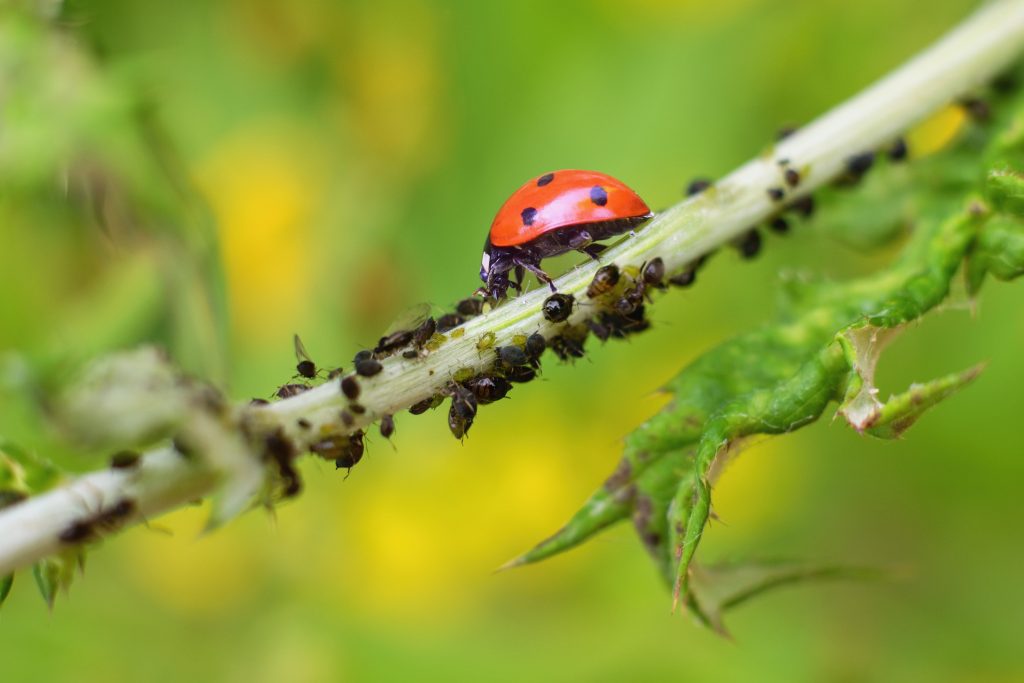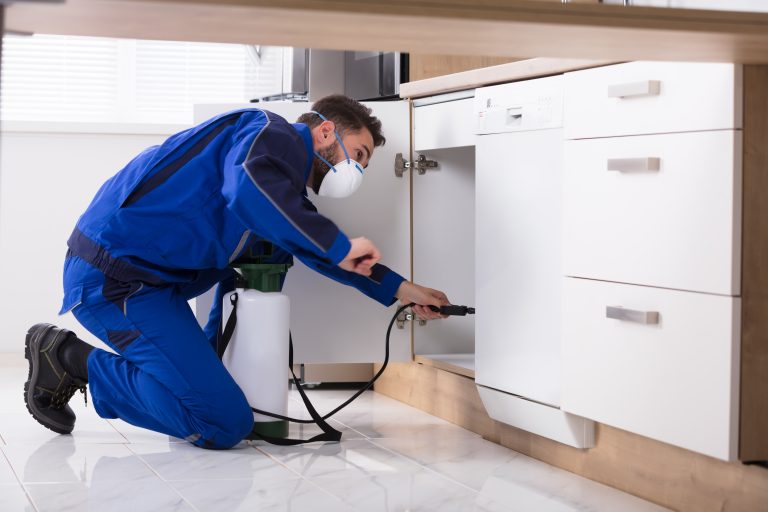8 Key Integrated Pest Solutions for a Bug-Free Home

Are you tired of uninvited six-legged guests turning your home into their playground? Integrated Pest Management (IPM) might just be the superhero you need to reclaim your space. Let’s delve into the world of bugs and banish them with these savvy strategies.
Integrated Pest Management (IPM) is the savvy approach to pest control, blending common sense with science to create a bug-free space without the drama. It’s a strategic process, not a one-time fix, minimizing reliance on harsh chemicals. IPM considers pests’ life cycles and environmental dynamics, aiming for precision over indiscriminate warfare.
From sealing entry points to fostering natural predators, it’s a multifaceted strategy keeping homes pest-unfriendly. It’s proactive, like setting up a chessboard in advance and staying ahead of the game by addressing root causes rather than swatting symptoms. IPM empowers you to orchestrate pest control, turning nuisances into silenced instruments with each calculated move.
1. Seal Entry Points

Imagine your home as a fortress. Every crack and crevice is a potential drawbridge for pests. Sealing entry points is your first line of defense. It’s like putting up a “No Vacancy” sign for bugs. Check for gaps around doors, windows, and utility lines, and seal them with caulk or weather stripping. It’s a Saturday afternoon project that can save you a whole lot of headaches.
Hey hey! Don’t forget to subscribe to get our best content 🙂
But don’t stop there; think like a mouse. They can squeeze through spaces as small as a dime! Inspect your home’s exterior for any openings and fill those tiny gateways with steel wool or wire mesh. It’s like setting up a tiny obstacle course that pests just can’t navigate.
Lastly, consider the bigger picture. Those lovely trees and bushes touching your home? They’re like bridges for ants and other climbers. Trim back the greenery and create a buffer zone. It’s not just about aesthetics; it’s about strategic landscaping. It’s like telling pests, “You shall not pass!”
2. Maintain Garden Health
Your garden might be a paradise for you, but it’s also a buffet for pests. Maintaining garden health is like being a bouncer at the hottest club in town – you only let the good stuff in. Start with healthy soil; it’s the foundation of a strong garden. Compost and natural fertilizers are your best friends here. They’re like the VIP nutrients that keep your plants robust and less tempting to pests.
Next, diversity is key. Mix it up with a variety of plants. This isn’t just for curb appeal; it’s a tactical move. Different plants attract different allies, like ladybugs and praying mantises, which are natural pest controllers. It’s like assembling an Avengers team for your garden.
And don’t forget about water management. Overwatering is like throwing a pool party for pests, especially mosquitoes. By watering wisely and ensuring proper drainage, you’re keeping the party dry and dull for unwanted guests. It’s like being the responsible party host who knows when to call it a night.
3. Use Biological Controls

Biological controls are the unsung heroes of the IPM world. These are natural predators that feast on pests like they’re at a gourmet buffet. Ladybugs munch on aphids, and parasitic wasps lay eggs inside caterpillars – it’s nature’s pest control service, and it’s free!
Introducing these beneficial insects into your garden can be as easy as setting up a bug hotel or planting nectar-rich flowers. Think of it as rolling out the red carpet for these VIPs. They’ll repay you by keeping pest populations in check. It’s like having your army of tiny, six-legged bouncers keeping the riff-raff out.
But remember, this isn’t a one-size-fits-all solution. You’ve got to match the right predator with the right pest. It’s like a dating service for bugs – you want to make sure you’re setting up a love connection that’ll benefit your garden.
4. Chemical Treatments Tips

Sometimes, you’ve got to roll up your sleeves and bring out the big guns. But before you go all Rambo with the chemical treatments, take a breath. IPM isn’t about eliminating all chemicals; it’s about using them wisely. Spot treatments are your best bet – think of them as surgical strikes rather than carpet bombing.
Choose products that are as specific to your pest problem as possible, and always follow the label instructions. It’s like being a sniper rather than a spray-and-pray rookie. You want to minimize collateral damage to beneficial insects and the environment.
And consider this: chemicals should be the last resort, not the first response. By using other IPM strategies first, you can often keep pest levels low enough that chemicals become an occasional tool rather than a crutch. It’s about being smart, not heavy-handed.
5. Regular Cleaning Routines

A clean home is a strong fortress against pests. Regular cleaning routines are like daily drills for your troops. By keeping your home tidy, you eliminate food sources and breeding grounds for pests. It’s like cutting off their supply lines.
Don’t leave dirty dishes out or food scraps lying around. It’s like sending an open invitation to a pest party. And remember to take out the trash regularly, and store it in sealed bins outside. It’s just basic hygiene, but it’s as effective as a moat around a castle.
Vacuuming regularly, especially in hidden nooks and crannies, can suck up any eggs or critters hiding out of sight. It’s like having a secret weapon in your pest control arsenal. So, keep that vacuum handy – it’s more powerful than it looks.
6. Monitor & Identify Pests
Knowing your enemy is half the battle. Regular monitoring and correct identification of pests are crucial. It’s like being a detective on a stakeout – you’ve got to know who’s causing trouble. Sticky traps and pheromone traps can help you keep tabs on what’s creeping around.
Once you’ve ID’d the culprits, hit the books (or the internet). Learning about their life cycles and habits is like gathering intel. It helps you predict their next move and plan your counterattack. Knowledge is power, and in this case, it’s the power to keep pests at bay.
And don’t forget to record your findings. Keeping a pest diary might sound like overkill, but it’s like having a history book of past invasions. This info can be invaluable in predicting and preventing future outbreaks. It’s like being one step ahead – always.
7. Non-Toxic Repellents

Non-toxic repellents are the gentle giants of pest control. They keep pests at bay without the collateral damage. Essential oils like peppermint, eucalyptus, and citronella can be effective and smell a heck of a lot better than chemical concoctions. It’s like having a spa day that bugs hate.
Diatomaceous earth is another great option. It’s like tiny shards of glass to insects but harmless to us and our pets. Just sprinkle it around areas where pests are a problem, and it’s like setting up a no-bug landmine field.
And let’s not forget the power of good old-fashioned soap and water. A little dish soap mixed with water can be a safe spray for plants infested with soft-bodied pests. It’s like giving your plants a bath that also gives pests the slip.
8. Professional Assistance

Sometimes, despite your best efforts, pests can still get the upper hand. That’s when it’s time to call in the cavalry – professional pest control services. These folks have the heavy artillery and the know-how to handle infestations that are out of your league. It’s like hiring a personal bodyguard for your home.
But choose wisely. Look for professionals who practice IPM and aren’t just trigger-happy with chemicals. You want someone who’ll work with you to develop a long-term strategy, not just a quick fix. It’s like finding a doctor who treats the cause, not just the symptoms.
Remember, hiring a pro doesn’t mean you’re admitting defeat. It’s acknowledging that you’re serious about keeping your home bug-free. And there’s no shame in calling in the experts when you need them. It’s like knowing when to pass the baton in a relay race.
Prevention & Maintenance
Prevention is the golden rule of IPM. It’s about setting up your home and garden so that pests don’t stand a chance. It’s a lifestyle, not just a list of tasks. By incorporating IPM practices into your daily routine, you’re building an invisible shield around your home.
Maintenance is just as important. It’s like keeping your car tuned up so it runs smoothly. Regular check-ups and minor fixes can prevent major pest infestations down the line. It’s about being diligent and staying on top of things.
And remember, IPM is a journey, not a destination. It’s a continuous process of learning, adapting, and improving. By staying committed to these principles, you’re not just keeping pests out; you’re creating a healthier environment for yourself and your family. It’s a win-win.
So there you have it, a bug-free home is not just a dream—it’s entirely achievable with a little know-how and a lot of IPM. Roll up those sleeves and get to it, because those bugs aren’t going to evict themselves. Happy pest hunting!






